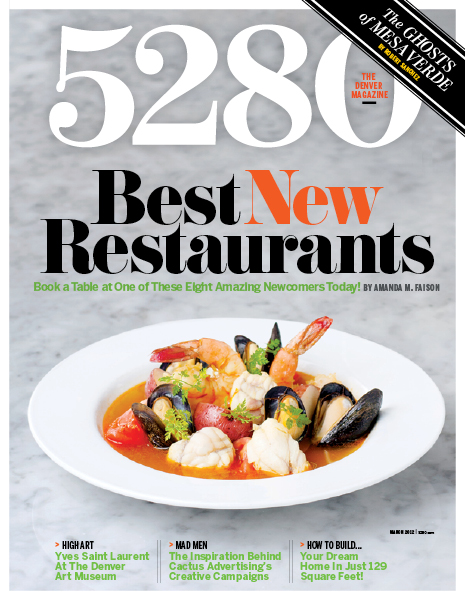The Local newsletter is your free, daily guide to life in Colorado. For locals, by locals.
I love a good party, which is why I’m reluctant to disparage any shindig, especially ones with free-flowing beer. So for many years I’ve given the drunken craziness that is St. Patrick’s Day in America a free pass. After all, I always thought I had Irish blood running through my veins, and it felt special to be a part of the I’m-Actually-Irish Club on March 17. But a few years ago, I began to lose my tolerance (for others, not beer) when a scantily clad girl was upchucking in the trash can next to me at the Irish Snug while a dude in a “Let’s Drink and Make Bad Choices” T-shirt asked my name—for the seventh time.
But when I found myself becoming impatient with the hordes of Denverites celebrating St. Patrick’s Day (nearly 200,000 come out for the parade), I realized I had never confirmed that my ancestors were actually from the Emerald Isle. Yes, I have blue eyes, fair skin, and ringlet-curly blond hair, and I think friends would say that I have a propensity to talk—a trait often ascribed to the Irish. Those things, however, do not an Irishwoman make. Instead, I’d always leaned on my dad’s assertion that his great-grandparents came to New York City from Ireland.
So, months in advance of March 17, 2012, I decided to make certain I had the birthright to party. I called my parents, wrote down the little family history they knew, and typed my Visa number into the field at Ancestry.com. After two hours, I couldn’t trace the hearty bunch of West Virginia coal miners on my mom’s side far enough back to determine their heritage; much of the tree on my dad’s paternal side was similarly truncated. My last hope rested with my father’s mother—my Nannie—whose maiden name was Mary Teresa McQuillan. She was a spirited lady with a confident, clever, and mouthy personality. The tree branched with ease, stretching through James P. McQuillan (her father) and onto Bernard and Mary McQuillan (her grandparents), who, to my delight, had emigrated from Ireland in 1888.
I am, at the very least, a fraction Irish, and I’m proud of that. Yes, the perception among Americans today is that the Irish are cool—enigmatic imbibers of Guinness and whiskey, who have sexy, soft-voweled accents and a proclivity for well-placed profanity. (Think Colin Farrell and Liam Neeson.) But I’m more enchanted with the idea that the Irish were the opposite of cool when they arrived stateside. In fact, no minority group in America was considered lower class than the Irish in the mid-1800s, when more than two million arrived here after the Great Potato Famine. They came here to find a better life and, in many instances, worked hard enough to attain it—a truly American success story.
St. Patrick’s Day parades are also uniquely American. The first one was not held in Ireland, but in New York City, as a way for Irishmen to reconnect with their roots. Over the decades, St. Patrick’s Day celebrations in America have morphed from a show of Irish patriotism into something much less culturally aware. In Ireland, St. Patrick’s is a holy day meant for feasting, mass, and, if possible, taking in a pint at the local pub. In America, it’s an excuse to get fall-down drunk.
Everyone needs to blow off steam once in awhile, including me, but given a choice I’d avoid the green beer–soaked shenanigans, which don’t feel like a way to honor the Irish or to pay homage to my family, even if I’ve never met them. Instead, I’d rather enjoy a quiet—and malt-colored—pint with friends at a local pub on St. Patrick’s Day. The girl in the trash can is not invited.
The author’s Irish grandmother pictured front right.









